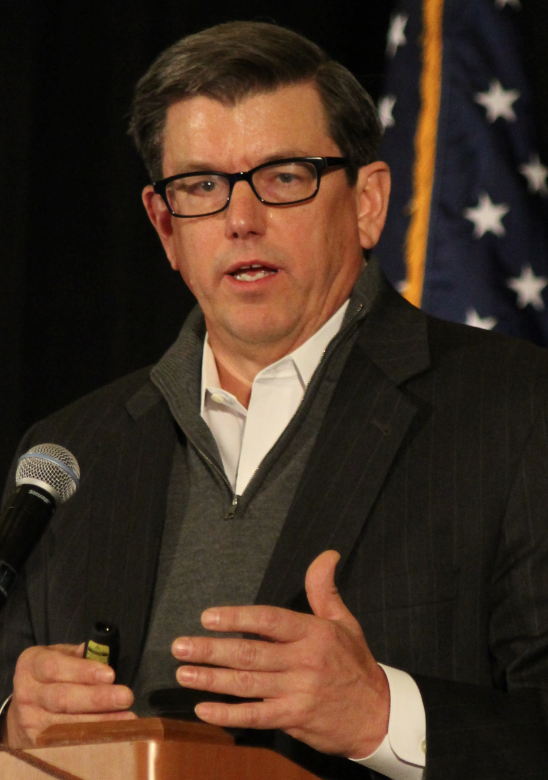Much of the financial improvement was due to the railroad’s shift to an operating plan based on Precision Scheduled Railroading, which has driven down costs, made the railroad more efficient, and improved key service metrics.
“We are very, very pleased with the progress we have made and believe there is more to come,” CEO Patrick Ottensmeyer told investors and analysts on the railroad’s earnings call on Friday morning.
For the fourth quarter, KCS’s operating income fell 8%, to $236 million, due to restructuring charges of $38.3 million. Revenue grew 5%, to $729 million. Earnings per share, adjusted for one-time items, grew 17% to $1.82. The railroad’s adjusted operating ratio was 62.4%, a 1.9-point improvement over a year ago. Adjusted financial measures – including operating income, operating ratio, and earnings per share – were all fourth quarter records, Ottensmeyer says.
Quarterly traffic volume sagged 1% as declines in intermodal and automotive traffic more than offset strong gains in the railroad’s chemical and petroleum and industrial and consumer business segments.
For the year, operating income fell 10%, to $886 million, as revenue rose 6%, to $2.8 billion. The full-year operating ratio, adjusted for the impact of one-time items, was 63.2%, a 1.1-point improvement. Earnings per share, also adjusted for one-time items, grew 16%, to $6.90. KCS’s traffic fell 1% for the year.
The ongoing rollout of PSR-related operating changes boosted average train speed by 36% compared to a year ago and reduced terminal dwell by 23%, Chief Operating Officer Jeff Songer says.
The railroad operated with an active locomotive fleet that was 16% smaller than a year ago as it moved traffic on fewer but longer trains, particularly in Mexico, says Sameh Fahmy, executive vice president of PSR implementation.
KCS will continue to make operational changes in Mexico designed to increase train length and reduce crew starts, Fahmy says.
Congress this week approved the new North American trade deal after more than three years of uncertainty over what would replace NAFTA.
“Certainly the resolution of USMCA … is a positive,” Ottensmeyer says, noting that it is difficult at this point to quantify the benefits to KCS. “It removes a very significant cloud of uncertainty for us, and there is fairly high expectations in Mexico that resolving USMCA is going to provide a boost to the economy in Mexico, which certainly would be a welcome occurrence for us.”
As a result of PSR-related improvements, KCS moved up its operating ratio targets by a year. It now expects its operating ratio to be between 60% and 61% this year and below 60% in 2021.
The railroad has a positive outlook for 70% of its revenue this year, including chemicals and petroleum, agriculture and minerals, and its industrial and consumer business segments. It has a neutral on the rest, including intermodal, energy, and automotive.














It looks like a short term gain as the railroads push PSR but fail to provide the end service to the customer. If the end service is not good then the customer goes elsewhere for that service. It shows that actual volume is down so within 3 years most railroads should have run out of options to improve profitability outside of jacking up prices for the few remaining customers. Any blip in the economy and all railroad stock will tank.
The Op Income fell 10%, Traffic volume down 1%, and Locomotive fleet use down 16%. Sounds like a struggling operation, not a bustling business. They can brag when the traffic volumes are up 5% or 10%, and Locomotive fleet use is back to 90’s level when RR’s were ordering new locomotives like they were dime store trinkets, and they have to look to add capacity because they have so many trains to operate.
Same as CSX. Your operating ratio should improve when you hand less cars. How about growing traffic & also improve your OR. Now that would something to brag about.